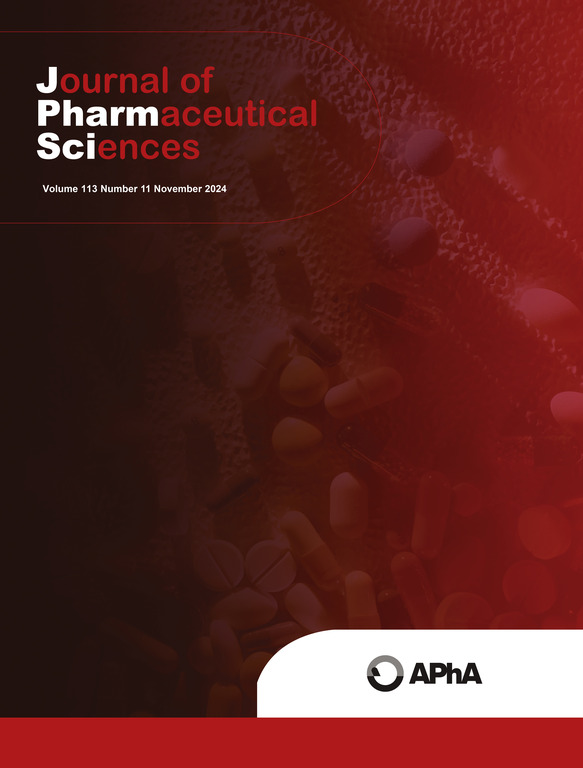水槽条件对控释制剂药物释放行为的影响
IF 3.7
3区 医学
Q2 CHEMISTRY, MEDICINAL
引用次数: 0
摘要
开发控释(CR)制剂是一个复杂而反复的过程,通常需要进行临床前或临床研究,以建立体外-体内相关性。由于在体外遇到的非沉降条件,这对于溶解性差的药物来说尤其具有挑战性。虽然药典溶出度方法(如 USP II、IV)历来被用于了解 CR 制剂的溶出性能,但人们对更贴近生理的实验技术越来越感兴趣,以提高预测能力。本研究采用了传统的 USP 仪器和生物相关的吸收性溶出仪,以了解仪器类型和水槽条件对 CR 制剂释放机制的影响,进而评估吸收性溶出仪在 CR 制剂溶出测试中的应用。使用 Peppas 方程进一步分析了释放机理,从而提供了更多的机理见解。对于固有溶解度低的药物,其释放行为显示出对溶沉条件的强烈依赖性,而高溶解度药物则不受溶解条件的影响。有趣的是,研究发现溶解机制与仪器类型无关。这项研究明确强调了在开发更具预测性和生物相关性的 CR 制剂溶出测试方法时考虑沉降条件的重要性。此外,该研究还强调了沉降条件的潜在影响以及由此导致的药物释放机制随剂量变化而产生的差异。本文章由计算机程序翻译,如有差异,请以英文原文为准。
Impact of sink conditions on drug release behavior of controlled-release formulations
Developing a controlled release (CR) formulations is a complex and iterative process, often requiring preclinical or clinical studies to establish in vitro-in vivo correlations. This can be particularly challenging for poorly soluble drugs due to the non-sink conditions encountered in vitro. Although compendial dissolution methods (e.g., USP II, IV) have historically been used to understand the dissolution performance of CR formulations, there is increasing interest in more physiologically relevant experimental techniques to improve the predictive ability. In this study, traditional USP apparatus as well as the biorelevant absorptive dissolution apparatus were employed to understand the impact of apparatus type and sink condition on the release mechanisms of CR formulations and in turn evaluate the application of absorptive dissolution apparatus for dissolution testing of CR formulations. Release mechanisms were further analyzed using the Peppas equations, providing additional mechanistic insights. The release behavior showed a strong dependence on sink conditions for drugs with low intrinsic solubility, while highly soluble drugs were unaffected by dissolution conditions. Interestingly, the dissolution mechanism was found to be independent of the apparatus type. The study clearly underscores the importance of considering the sink conditions in developing more predictive and biorelevant dissolution testing methods for CR formulations. Furthermore, the study highlights the potential impact on the sink and resultant differences in the drug release mechanisms as a function of the dose.
求助全文
通过发布文献求助,成功后即可免费获取论文全文。
去求助
来源期刊
CiteScore
7.30
自引率
13.20%
发文量
367
审稿时长
33 days
期刊介绍:
The Journal of Pharmaceutical Sciences will publish original research papers, original research notes, invited topical reviews (including Minireviews), and editorial commentary and news. The area of focus shall be concepts in basic pharmaceutical science and such topics as chemical processing of pharmaceuticals, including crystallization, lyophilization, chemical stability of drugs, pharmacokinetics, biopharmaceutics, pharmacodynamics, pro-drug developments, metabolic disposition of bioactive agents, dosage form design, protein-peptide chemistry and biotechnology specifically as these relate to pharmaceutical technology, and targeted drug delivery.

 求助内容:
求助内容: 应助结果提醒方式:
应助结果提醒方式:


